Archived Mold Remediation Blog Posts
What To Know About Mold and Your Insurance
5/24/2019 (Permalink)
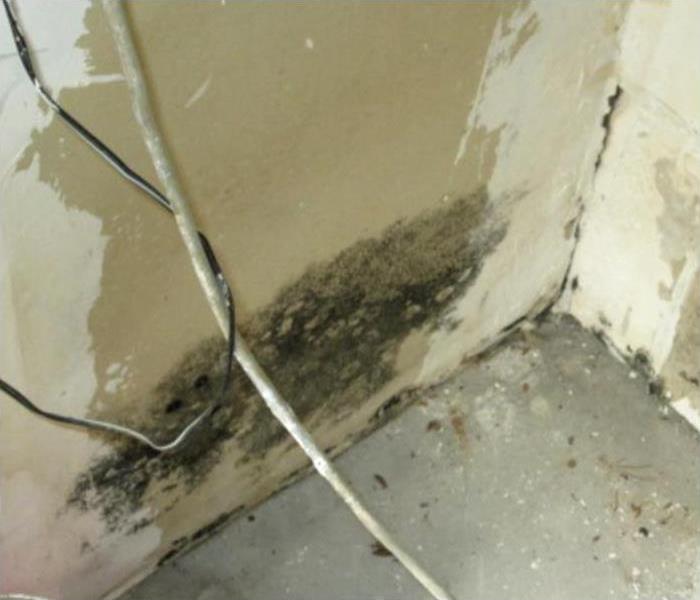 Mold damage to drywall
Mold damage to drywall
What To Know About Mold and Your Insurance
For an apartment in Rio Verde, AZ, having rental insurance is an important aspect of being a responsible tenant. When you select your policy, you may be wondering what your coverage includes. One of the things to inquire about is what the policy says about mold damage. Fortunately, many policies have some similarities depending on the following questions.
1. What is the Mold Cause
The first thing to consider is what is the cause of the mold. If it's the results of a natural disaster such as flooding, occurs after fire suppression efforts, or from an accident such as a pipe leak you may be in luck. If the mold is a result negligence on your part then it may not fall under your policy. If you think you may have mold, or water damage that could lead to mold, it's best to take care of the problem as quickly as you possibly can.
2. Should You Reasonably Have Known
Your rental insurance agent may also look at if you should reasonably have known about the problem. In an obvious place such as under a windowsill they may expect you to catch it. Other areas such as beneath the floorboards or between a wall may mean normal reasonable effort would not have found it. It's also important to note that in some cases mold damage may fall under your landlord's realm of responsibility.
3. Did You Try to Mitigate
Your insurance agent may also look at if you've done everything you can in good faith to mitigate the damage. This may include informing maintenance as soon as you knew about it, taking care of any leaks, and even contacting a professional remediation service for mold removal.
When it comes to your rental insurance policy it's best to talk to your agent about what exactly it contains. But most cases, if you've done everything you can in good faith to mitigate the damage as soon as you knew about it, you should be covered up to a certain amount. Remember, when in doubt it's always best take care of the problem as quickly as possible.
How To Rid Plants of Mildew
3/6/2019 (Permalink)
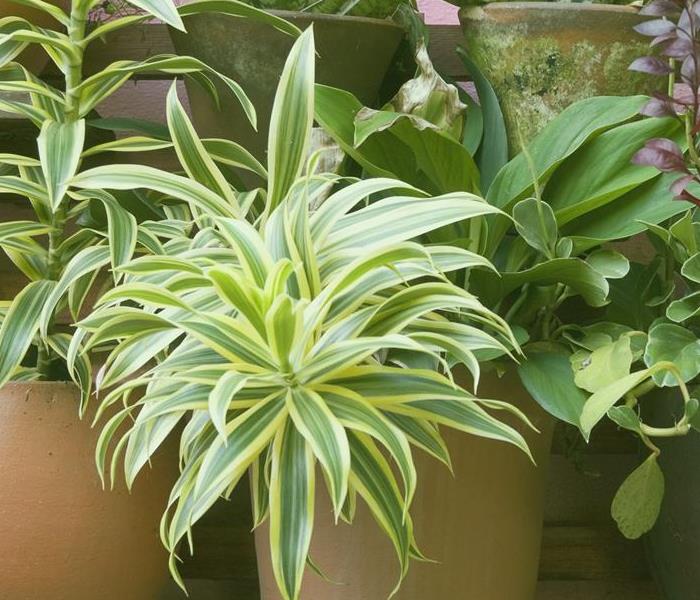 Don't let your plants get affected from mildew
Don't let your plants get affected from mildew
Is plant mildew getting you down? Many homeowners in Scottsdale,AZ, are frustrated by the growth of mildew on household plants, which is common in humid and wet climates; and they are not sure how to get rid of it. Fortunately, there are four steps that you can take to remove this pesky mildew.
1. Move the plant. If your mildew-affected plant is of the indoor, potted variety, consider moving it outdoors before doing anything else. The following steps explain why this migration is so important.
2. Wash your plant. Now that you’ve moved your plant outside, spray it with plain water to remove as much mildew as possible. This is especially important if the plant mildew is very prominent.
3. Cut off the mildew. If you can, cut off all the mildew. This is a necessary step to take because it can help improve the plant’s air circulation which should allow it to stay drier. If your plant is fully or almost fully covered in mildew growth, you may have to face the fact that the plant will not survive cutting.
4. Give it sun. Now that you have cleaned your plant and have it out in the open air, adding some warm, bright sunlight should help it stay dry and mildew-free. This final step is especially important if your plant keeps growing mildew.
Mildew Versus Mold
Many homeowners are confused about the difference between plant mildew and mold. Learning how to identify the two is an important additional step to take when trying to find a solution to your mildew problem. It is actually quite easy to tell mildew apart from mold, as mildew will never grow on anything besides a plant. In other words, the growth you see on walls, in the basement, or at other locations around the house is most likely mold and is probably not mildew. If you still have questions about the two or need help with mold and moisture issues, contact a mold remediation service near you.
Trust Trained SERVPRO Techs to Remediate Your Mold Damaged Property
2/20/2019 (Permalink)
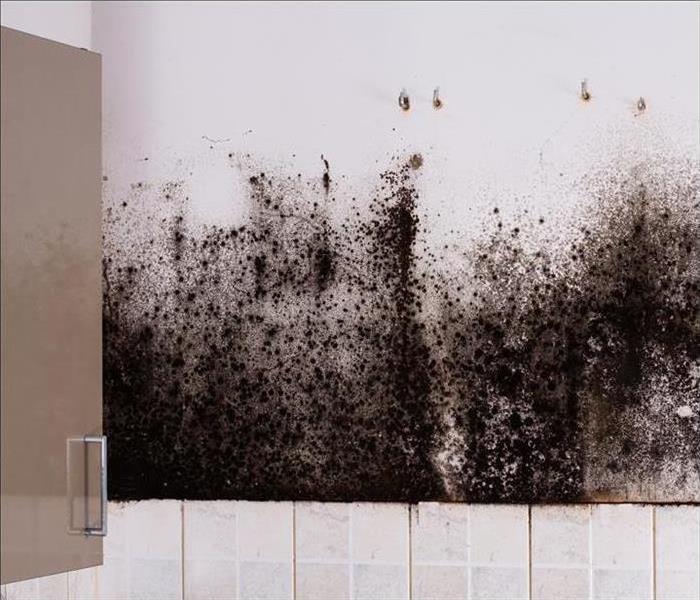 SERVPRO Remediates Mold Infestations in Scottsdale Properties.
SERVPRO Remediates Mold Infestations in Scottsdale Properties.
It's easiest to control and repair mold damage in its early stages, but many homeowners aren't sure of what signs to look for. Left to spread, mold can affect the health of humans and animals, create odors that are very difficult to get rid of, and cause damage to your home's structure, flooring, and possessions.
Though the weather in town is typically warm and on the dry side, it's not uncommon for homeowners to encounter mold damage in Scottsdale. If you suspect that your home is in need of mold remediation, it's important to contact a skilled team, such as SERVPRO so that the problem can be remediated efficiently.
Remediate Your Mold Damaged Property
Here are three telltale signs that your home may have mold damage:
- Persistent moldy (musty) odors. Mold can often be smelled before it is seen, so don't ignore any lingering odors that persist in your home. Contacting our experts at SERVPRO for an inspection when you first smell mold can help prevent the problem from getting worse. Remember, this is like a smoke alarm, warning you of impending problems.
- Increased humidity and condensation. Mold thrives in humid, wet conditions, and if your home's humidity has noticeably increased the risk of mold damage becomes greater. The higher humidity and condensation in your home could be the result of a roof in need of repair, faulty HVAC system, or your home's proximity to a nearby lake. The RH, relative humidity, in your house can be adjusted and stabilized with the use of one or two dehumidifiers.
- Leaking water. Water leaks from burst pipes, cracked exterior walls, and damaged roofs are notorious for leading to mold infestation. Leaks can go undetected for months or longer, and combined with a mold infestation, can weaken the framing, resulting in severe structural damage.
Mold damage is a serious matter, but you can trust the professionals at SERVPRO of Scottsdale to get your home back in top shape. "Like it never even happened."
Where’d This Mold Come From? 3 Reasons You’re Experiencing Mold Growth
2/20/2019 (Permalink)
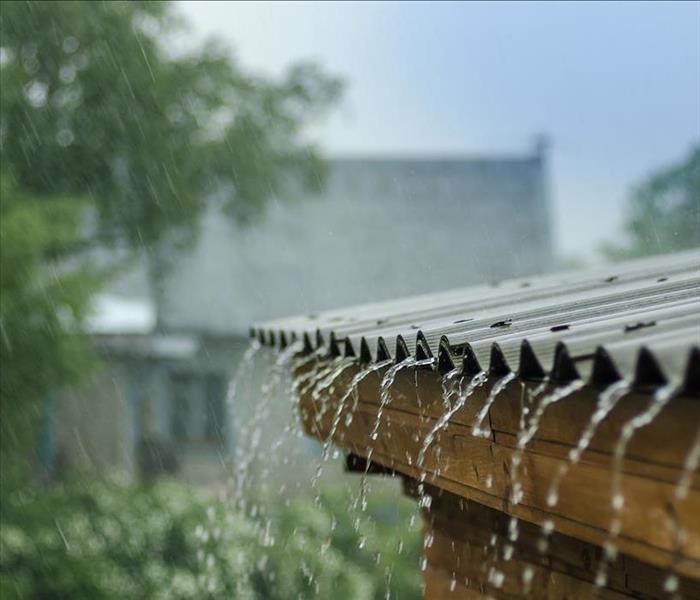 Flooding is perhaps the most obvious cause of mold growth.
Flooding is perhaps the most obvious cause of mold growth.
No one wants to find mold growing in their home. However, it’s a common occurrence the average homeowner in Scottsdale, AZ can expect to face once or twice in a lifetime. Regardless of how commonplace the issue might be, when you locate a little patch of mold under the sink or elsewhere in your house, it’s probably your first instinct to ask yourself, “How did this get here?” The answer is typically easier than you might think.
Where’d This Mold Come From?
There are three main reasons why you might be experience black mold in your home:
- A Moisture Problem
An ongoing moisture problem is usually the chief cause of mold growth and spread. Some common household moisture issues that could lead to the presence of mold include:
- Leaks in plumbing
- Leaking roofs or siding
- Improperly sealed walls and other surfaces
- Broken water supply lines
These issues are simple enough to repair, but they can be difficult to identify at times. If left unchecked, mold is likely to form in areas that experience water-damage due to these problems.
- Air Temperature and Humidity
Over time, keeping your home just a bit too warm can facilitate the growth of black mold, just like common moisture issues. Humid air traps water in an enclosed space, which then condenses on walls. Mold spores come into contact with this moisture and latch onto the source. Keeping the thermostat a bit lower when you expect to be out of the house can combat mold a bit.
- Flooding
Flooding is perhaps the most obvious cause of mold growth. During flooding of any intensity, parts of your home are subjected to a huge amount of standing water. Even after a bit of professional mold cleanup, it’s likely some of this water has soaked into the walls of your home where it can provide moisture for mold growth.
Understanding the causes of black mold growth can help you prevent the necessary conditions for a thriving mold contamination in your home, allowing you and your family to live and breathe easily.
Preventing Mold in your Scottsdale home
2/4/2019 (Permalink)
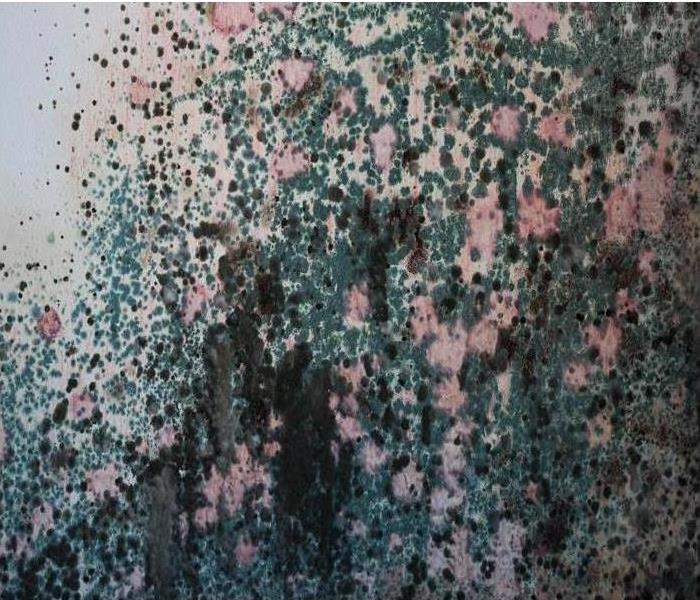 Mold can grow behind drywall, cabinets, or even on the furniture.
Mold can grow behind drywall, cabinets, or even on the furniture.
In today’s energy efficient homes, air does not move freely in and out of the home. While this is good for energy savings, it can create moisture and Phoenix mold problems. Though mold growing inside a home is a serious problem, homeowners can take action to prevent mold.
Remove Water
Though it may seem obvious, removing water from the home is one of the simplest ways to prevent Phoenix mold damage. Leaking roofs or basement walls should be promptly repaired. Dripping faucets and leaking drains should also be repaired. When leaving the home for extended periods of time, cabinets under faucets should be left open so air can circulate.
Keep the Home Tidy
Clutter in a home, such as stacks of books or clothes, provides an ideal environment for mold. Mold can grow on these damp items and feed on the natural fibers in the clutter and quickly grow out of control. However, by keeping the home organized, with materials properly stored, there is little chance of mold starting to grow.
Air Conditioning Maintenance
Air conditioning systems not only cool the temperature of the air, but they also remove moisture from the air as drier air feels cooler. When an air conditioning system is working properly, it will remove moisture from the home and reduce the chances of moisture developing through condensation on windows and other areas inside the home. It is important to have an air conditioner inspected at least annually to make certain it is working properly.
Use a Dehumidifier
Though air conditioning systems play a role in removing moisture, a whole home dehumidifier can help to correct and prevent moisture problems in the home. Systems can be added to the HVAC system to remove moisture and which will drain outside of the home. These systems are ideal for homes, especially those located in humid areas.
Professional Services
If mold does grow in a home, it can be difficult to remove completely. Mold can grow inside the drywall, in air ducts and inside upholstered furniture. If a home develops mold, it is important for a professional remediation company to inspect and treat the Phoenix mold damage. The professionals at SERVPRO have the training and experience to help a homeowner to remove and prevent future mold growth.
Locally Owned Company with National Resources
SERVPRO of Scottsdale is locally owned and operated—so we live and work here too and are proud to be part of the Scottsdale community. When you have a water or mold damage issue, we’re already nearby and ready to help.
We are also part of a national network of over 1,650 SERVPRO Franchises and special Disaster Recovery Teams strategically located throughout the country to respond to large scale disasters.
We are here in Phoenix and are ready to help you. Just call us.
Choosing an Air Purifier To Remove Mold Spores
1/22/2019 (Permalink)
Air Filtration System To Control Mold Growth
As you probably know, mold and mildew can ruin the comfort, value and appearance of your Scottsdale, AZ home. Because your house is likely your largest financial investment, you want to do what you can to keep mold growth in check. With an air filtration system, you may be able to remove mold spores before they take hold.
Mold Can Be Virtually Anywhere
Mold reproduces through microscopic spores that easily float on air currents in your house. If you have mold growth somewhere, you can bet that mold spores are trying to travel to other parts of your home. When examining your house for signs of mold growth, look at wet areas. Specifically, inspect the following places for mold:
- Basements
- Crawlspaces
- Kitchens
- Bathrooms
- Garages
- Attics
Air Purifiers Can Catch Spores
If you can trap mold spores before they gather on moist surfaces, you can likely stop mold growth. Unfortunately, though, not all air filtration devices work the same. When choosing an air purifier for your home, opt for one with a HEPA filter. These filters are designed to catch tiny spores and remove them from the air you breathe.
Technology Makes the Process Easier
Mold hates some air purifiers more than others. To effectively remove spores, use technology to your advantage. Think about purchasing a purifier that has a sensor to detect mold. When the sensor activates, the system automatically engages to catch the mold in the air inside your home. If you have excessive mold growth, though, you may need professional help. When you work with a reputable mold remediation service, you have access to both the expertise and equipment you need to keep mold in check.
To protect your financial investment, you must keep your house in tip-top shape. To control mold growth, you can use an air filtration system. When you choose the right air purifier, you know you are catching most of the spores that can destroy your home.
Know the Mold Growth You’re Dealing With
9/24/2018 (Permalink)
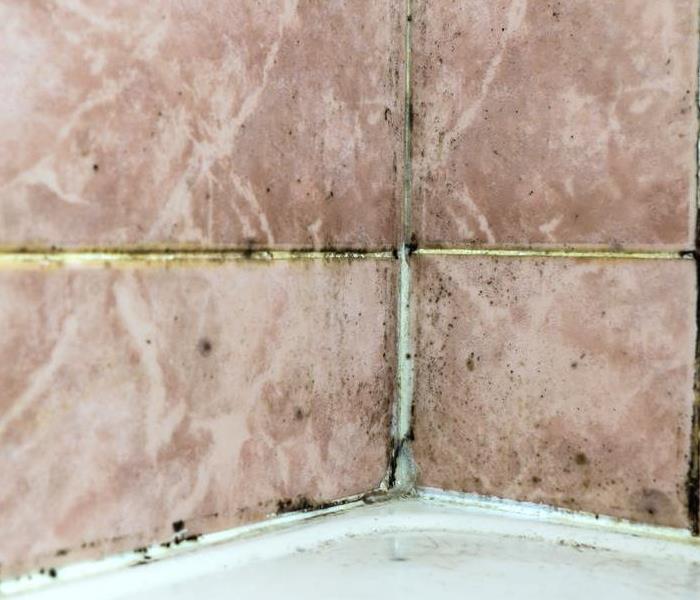 Mold damage in a Scottsdale, AZ home
Mold damage in a Scottsdale, AZ home
It’s well-established that homeowners should immediately remediate mold when it appears. What’s not as well known is that there are different types of mold growth of varying severity. In Scottsdale,AZ, there are excellent remediation specialists who can assess your situation and clean up the problem.
Different Types of Mold
Mold usually forms where there is moisture and an amenable surface to grow on. Identifying a particular type of mold usually comes down to color, texture, and where the mold is forming. The following are mold types you might see in your home:
- Acremonium has a powdery or moist texture, forms in systems producing condensation, and is extremely toxic.
- Aureobasidium forms on wallpaper and wood, is pink, brown, or black, and is allergenic.
- Chaetomium appears in homes damaged by water. This mold growth has a cotton texture and can cause skin infections.
- Cladosporium forms on fabrics, upholstery and carpet, is allergenic, and has a suede texture.
- Fusarium appears after flooding or leaks on carpeting, wallpaper and food, is highly toxic, and is pink, white, or red.
- Stachybotrys is highly toxic, forms on wood or paper surfaces, and has a slimy texture.
- Trichoderma forms on fabrics and in HVAC systems, has a wooly texture, and is allergenic.
- Ulocladium forms in kitchens, bathrooms, or windows and is black in color.
There are many types of mold that can grow in your home. The trick is knowing which are harmful.
Where Does Mold Come From?
Mold spores enter your home through air ducts and other openings. In the presence of high humidity, moisture, or water damage, however, they can proliferate and you may notice a growth. At this point, it can be helpful to know how serious the mold you’re dealing with is, and a professional remediation team can assist you by examining the growth and providing solutions to deal with it.
Identifying the mold that is forming in your home can help you have an informed conversation with your remediation specialist. This in turn can ensure the mold growth is cleaned up before it becomes a problem.
4 Reasons You Shouldn't Trust a Home Testing Kit
5/17/2018 (Permalink)
 If you suspect there's a fungus growth in your home, you may want to have mold testing done.
If you suspect there's a fungus growth in your home, you may want to have mold testing done.
4 Reasons You Shouldn't Trust a Home Testing Kit
There's been a musty smell lingering in your Scottsdale, AZ, home, so you decide to do some investigation. After a preliminary search of the house, you can't find any mold. You decide to get a DIY mold test kit to get to the bottom of your dilemma. You follow all of the steps and your results are in. There's mold in your house! While this may be true, a home mold testing kit actually isn't that accurate. Here are four reasons you should work with a mold remediation team and a certified environmental hygienist instead.
1. Mold spores exist everywhere. They float around indoors and outdoors. When a mold kit comes back positive, it could mean there's growth in your house, but the kit could also be picking up the naturally occurring spores from the air.
2. You don't know how old the tests are. Most mold testing kits don't use a dating system. This means your kit could have been sitting on warehouse and store shelves for years. The longer a product like this lies around unused the greater chance it has been contaminated. The positive results could be from mold spores that found their way into the box years ago.
3. The findings aren't explained. When you work with a professional team, you can get all of your questions answered. The experts can go over the meaning of the results and help you understand what your next move should be. A mold kit, however, simply comes back as positive or negative without much explanation.
4. It won't tell you where the mold is. Even if the test results are accurate, you still don't know where to look to find the growth. Sure, it might help you find out there's mold growth, but it doesn't help you get any closer to a solution.
If you suspect there's a fungus growth in your home, you may want to have mold testing done. It's best to work with a certified environmental hygienist rather than do a DIY mold test. For more information, visit http://www.SERVPROscottsdale.com/.
Prevention Is the Best Mold Cleanup Technique
3/26/2018 (Permalink)
What's the best way to get mold out of your home in Scottsdale, AZ? Don't give it a chance to start growing. Sometimes you don't realize the need for mold prevention until you have to deal with a major remediation. After a cleanup, your residential mold remediation team may be able to give you tips you can use to prevent mold from returning to your home.
Avoid Water Damage
Excess water creates a great place for mold to start growing. In fact, spores need to land on a wet surface to start growing in a new place. If you can prevent water damage, you have taken away one of the necessities of this fungus. Of course, some water problems happen quickly and without warning, but you can keep these tips in mind as you try to prevent water issues:
• Clean out your gutters
• Avoid planting trees too close to the foundation
• Hire a plumber to address leaks as soon as possible
• Make fixes to your roof quickly
• Test your sump pump regularly
• Turn off the water supply before going out of town
Mold prevention requires you to think ahead and act without hesitation.
Control Humidity
Excess moisture can also come in the form of high humidity. Mold growth can be kick-started by high levels of moisture in the air. You can prevent this type of water problem by running your HVAC system or using a dehumidifier in your home. The goal should be to keep your home's humidity level at or below 45 percent.
Reduce Clutter
It may sound silly, but cutting back on clutter can actually help stop mold growth. Too much stuff laying around your house can reduce circulation, which limits the effectiveness of your HVAC unit. Some clutter could even encourage condensation.
If you want to easily take care of a mold problem, you need to start practicing mold prevention. Stopping mold from growing is the best way to take care of the fungus. Visit http://www.SERVPROscottsdale.com for more information on mold.
4 Tips for Keeping Mold Out of Your Rental Unit
2/19/2018 (Permalink)
Whether you rent out an apartment or a commercial space, you have to do what you can to keep the unit looking nice. Mold prevention can be hard if the space is not used for a while. Even with regular tenants, mold growth due to water damage is a real concern for building owners in Scottsdale, AZ.
1. Lower the Heat
If a building is going to be unoccupied for a while, you may want to turn down the heat or air conditioning. However, you should avoid turning off the HVAC unit completely. The AC and heat can act as humidity stabilizers. This helps ensure there is not an excess buildup of moisture in a unit.
2. Turn Off the Water
When a building is not getting regular use, it might be a good idea to turn off the water. This reduces the chances of water damage taking place due to a leaky faucet or burst pipe. Turning off the water is not only a good mold prevention tactic, but it could also help you save money as you try to rent out the space.
3. Respond Quickly to Concerns
If a tenant complains about a mildew smell or water issues, you should try to respond as quickly as possible. Catching a problem while it is small may make the fix easier. If there is mold, it is best to start cleaning it up as soon as possible. Leaving it for weeks or months could allow it to spread to other parts of your building.
4. Schedule Regular Cleanings and Inspections
Being proactive is one of the best prevention methods available. Hiring a cleaning team that specializes in mold remediation may help you find out about mold problems before the issue can cause real damage. You may want to have your buildings inspected once every year.
Mold growth can happen overnight, especially when water damage is involved. Taking a hands-on approach to mold prevention may help you minimize the problems caused by unwanted fungi. Visit http://www.SERVPROscottsdale.com for more information on mold.
What Is the 5-Step Mold Remediation Process?
12/2/2017 (Permalink)
What Is the 5-Step Mold Remediation Process?
If you're in Scottsdale, AZ dealing with black mold, then you might want to understand the mold remediation process. That's the industry name for an established set of mold cleanup procedures that have the best chance to:
Improve air quality
Restore like-new appearances
Remove the maximum amount of mold
1. Isolation
Quarantining affected areas begins with identifying them. This typically involves a black mold expert coming to your home to perform a thorough inspection. Containment is an important step towards tackling the problem.
2. Safety
Safety usually comes first. However, in the case of mold remediation, protection tends to be necessary at every step of the process. Protective measures depend on the extent and type of the infestation, but they often include:
Ventilation
Respiratory gear
Evacuation of the site
Protective clothing
3. Removal
Teardown procedures for your home might be as simple as removing some drywall. However, more involved measures might be necessary, such as structural replacement or interior refinishing. Mold is rarely a superficial problem, especially when it gets to the point where you might consider calling a professional.
4. Cleanup
You might think the term 'cleanup' is applicable to the entire job of mold removal, but this step is more precise. Black mold technicians select appropriate chemicals to clean each type of affected material and its surroundings before proceeding with any final steps. The reason: mold starts out in microscopic quantities; it's not enough to simply remove what you can see.
5. Drying
Mold loves moisture, so getting rid of its habitat is an important step. This is especially true if the area needs to be closed up, caulked over or painted. Professional driers and monitoring equipment are a big help at this stage.
Mold remediation might be a fancy term for mold cleanup, but there's nothing elegant about removing mold from a home. It's a practical process that often requires experience, equipment and know-how to pull off effectively. Visit http://www.SERVPROscottsdale.com for more information on mold.
The Mold Damage Restoration Process in a Home or Business
8/22/2017 (Permalink)
The Mold Damage Restoration Process in a Home or Business
Mold can cause massive damage to a home or business when it is not removed in time. It is therefore important to look for a restoration company to prevent further damage. Mold in home can; grown on damp wood, blacken shower grout lines, leave black spots on the sliding, and discolor dry walls. Mold growth can be a nuisance to any home or business set-up, and that is why it is important to understand the process of mold damage remediation. In addition, the mold in home produces microscopic spores that leave a smelly odor in a room and cause massive property damage. The best way eliminate black mold, fungus, dry rot, or mildew from your home or business is to adopt a deodorization and mitigation program for mold damage. The following is as simple mold remediation process:
Locating the Mold
The remediation process involves the removal of the entire mold in home that can be seen. In order to prevent any possible commercial mold damage, it is advisable to completely eliminate all form of black mold, dry rot, mildew, and fungus from your home or business without sparing some. The remnants are more likely to grow and spread leading to more damage and smelly odor. Hiring a restoration company that offers professional mold removal services can help when it comes to long-term mold growth prevention.
The professionals apply a thorough mitigation program after carrying out all the necessary tests to assess the level of mold damage. A restoration company looks out for areas that appear to be dump and those that are smelly when trying to locate the mold in home. It is important to know that commercial mold damage can be located in sensitive areas such as air conditioning ducts, walls, and under floor coverings. The mold removal process should be followed by deodorization when such areas are involved.
Assessment and Calculation of Mold Damage
Apart from locating areas with mold growth, it is necessary to be very inquisitive when carrying out the mold mitigation process. The process should only be applied after a thorough assessment of all invisible intruders and mold growth behind walls. Locating the source of moisture is very critical because moisture and water are the major causes of black mold, fungus, dry rot, mildew, and smelly odor. In addition, thorough mitigation can only be guaranteed by investigating the amount of contaminated space in a home or business setup.
The approach to be adopted in mold removal and deodorization is determined by finding out the extent of black mold in a home or business. Calculating the level of commercial mold damage helps in protecting those involved in the remediation process from any form of harm. The level of mold growth behind wall determines the level of mold remediation that is applied by a particular restoration company.
Preparing the Damaged Area
The work areas should be sealed using heavy sheets of plastic and tapes. This is very important because it presents the spread of mold spores to other areas. The operation also involves the use of mold elevation tools. Before embarking on the remediation process, professionals always put on their protective gear. Mold growth behind wall cleanup and deodorization is normally done using fungicide to prevent future mold damage.
Mold Cleanup
Mold cleanup involves the removal of all moldy materials in the affected area. In order to prevent spores from spreading to other areas, it is advisable to slightly spray water on drywall and carpeting. The best way to prevent mold dispersal is to use a vacuum cleaner in the clean-up process. Sealed trash bags are used to keep the moldy materials before they are disposed. The process involves adequate cleaning of non-porous materials like tiles and bathtubs to remove all form of fungus, dry rot, mildew, and black mold. A rag should be used to apply fungicide when removing mold growth behind wall.
Repairs
The final stage in mold removal involves carrying out all the necessary repairs. The spread of commercial mold damage can be stopped by removing all the mold debris through vacuum cleaning. A chlorinated cleaner should be used to clean the floor during the mold mitigation process. Walls should be repainted to eliminate any smelly odor and other forms of mold damage. Finally, an oil-based primer should be used to seal wood surfaces after mold removal and prevent future mold growth.
Visit http://www.SERVPROscottsdale.com for more information on mold.






 24/7 Emergency Service
24/7 Emergency Service






